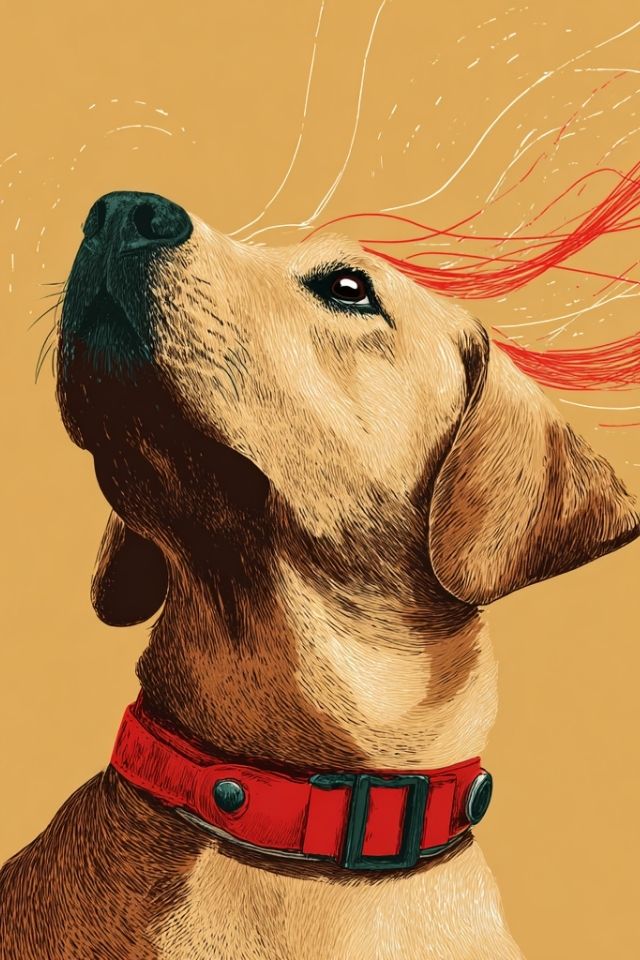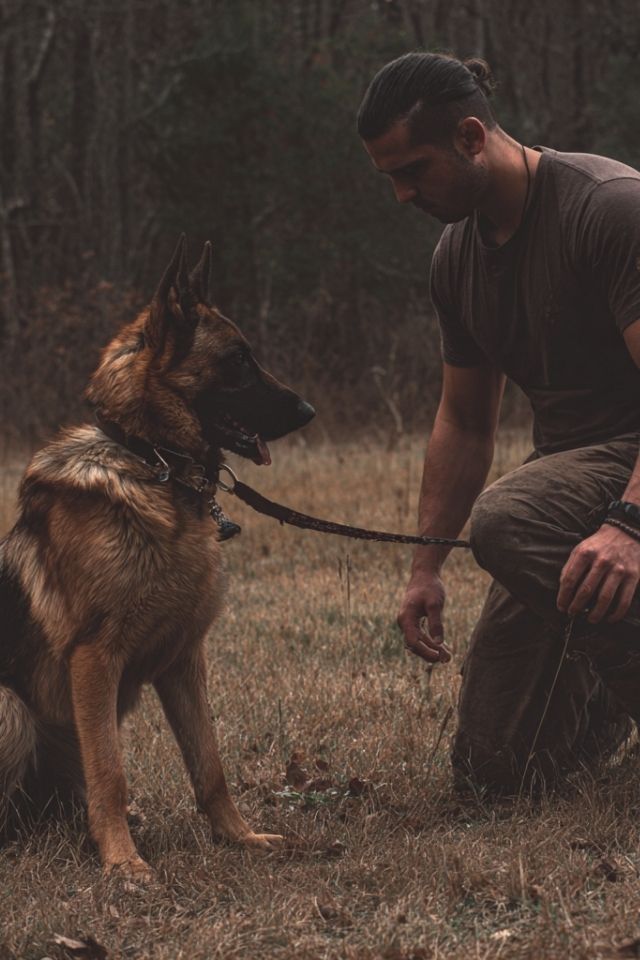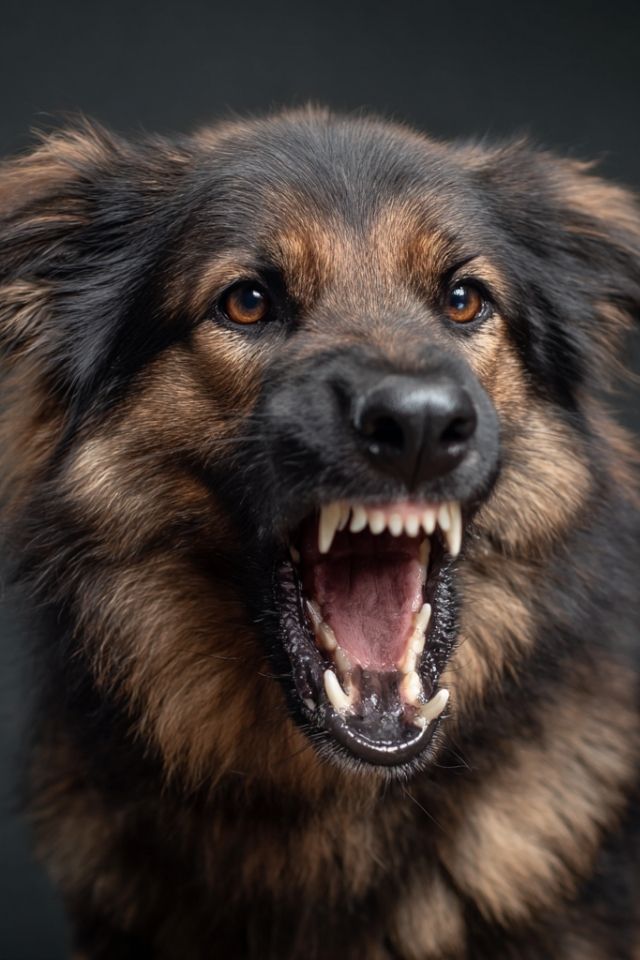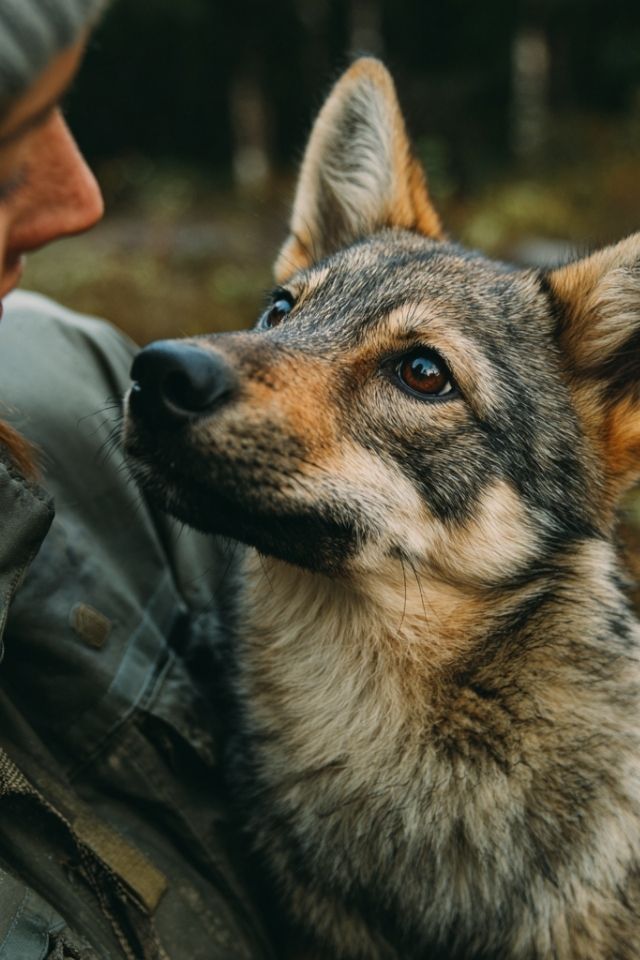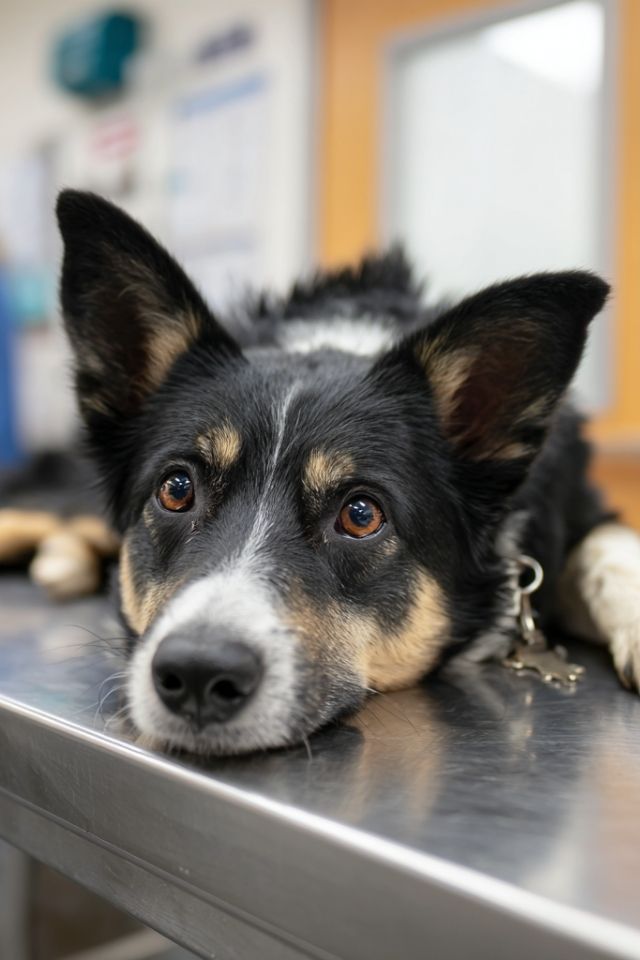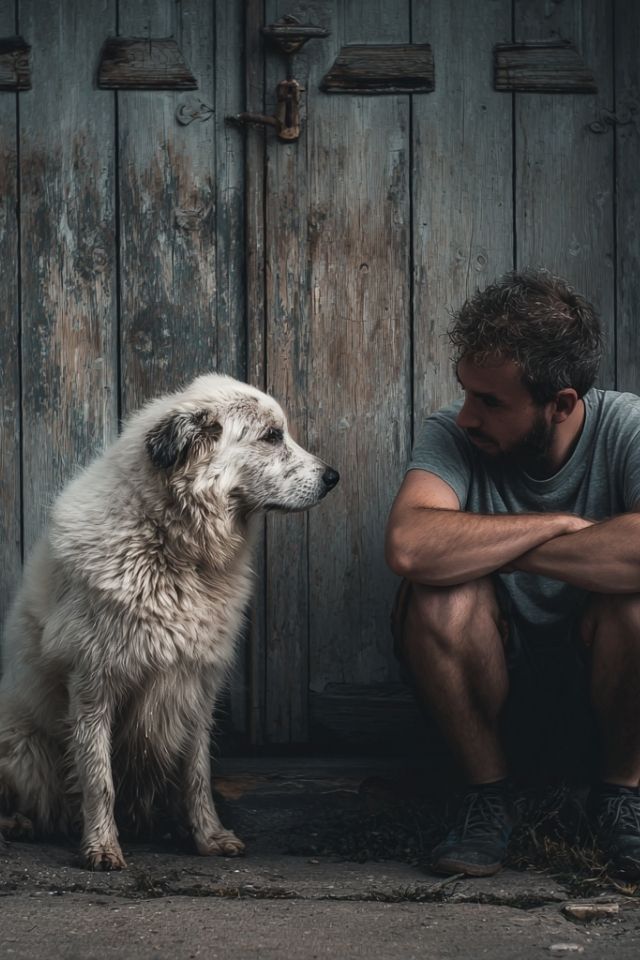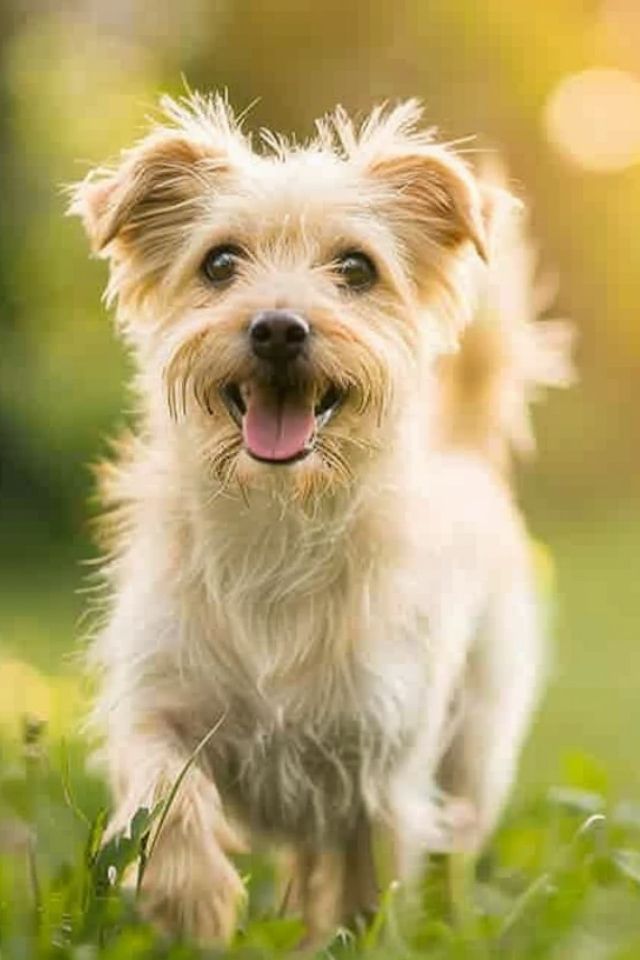The Moment Before the Storm
Picture this: morning light filters through your kitchen window as you prepare your dog’s breakfast. Your companion watches, muscles quivering with anticipation, every fiber of their being pulled toward that bowl. In this suspended moment—this breath between desire and action—lives one of nature’s most profound mysteries: the delicate dance between instinct and choice.
This is where our journey begins, in that electric pause where your dog’s ancient brain wrestles with their modern life. It’s a battle fought not in seconds but in milliseconds, not with teeth and claws but with neurons and neurotransmitters. And it’s a battle that shapes every moment of your shared existence, from peaceful morning walks to chaotic doorbell disasters.
What if I told you that within your dog’s mind exists an elegant architecture of control, a system so sophisticated it rivals our own? That beneath the fur and wagging tail lies a brain capable of profound transformation, of learning to choose thoughtfulness over reaction, reflection over impulse? This isn’t just training—it’s the awakening of your dog’s deeper cognitive gifts, what we might call their capacity for mindful presence. 🧠
The Theater of the Mind
When Two Worlds Collide
Deep within your dog’s skull, two ancient powers vie for control. In the executive suite sits the prefrontal cortex—imagine it as a wise elder, patient and thoughtful, weighing consequences and remembering lessons learned. This is the part of your dog that remembers to wait at doorways, that chooses to look at you instead of lunging at that squirrel, that somehow finds the strength to leave the dropped sandwich alone.
But there’s another player in this neural theater—the amygdala, wild and primal, keeper of survival’s oldest wisdoms. This almond-shaped guardian doesn’t think; it simply acts. When it senses danger (real or imagined), it floods the system with chemical alarm bells before the wise elder even knows what’s happening. In less than a heartbeat, your well-trained companion becomes a creature of pure instinct.
I once watched a Border Collie named Atlas experience this internal coup d’état in real-time. One moment, he was performing perfect heel work beside his human. Then a skateboard rattled past. His pupils dilated, his breathing shifted, and suddenly Atlas wasn’t there anymore—only his ancient wolf-brain remained, ready to chase or flee. His human called his name, but Atlas couldn’t hear her. Not wouldn’t—couldn’t. His executive brain had been temporarily evicted by his survival systems.
The Chemical Symphony
Every moment of your dog’s emotional life is orchestrated by an invisible chemical symphony. Cortisol rises like a crescendo during stress, each surge making thoughtful behavior more difficult to access. Serotonin flows like a gentle melody, smoothing the sharp edges of reactivity, creating space for choice where once there was only reaction.
When we understand this symphony, we stop seeing “disobedience” and start recognizing a nervous system overwhelmed by its own music. That dog pulling frantically on the leash isn’t being stubborn—they’re drowning in a neurochemical storm that’s temporarily severed their connection to learned behaviors. It’s as if the volume of their emotional experience has been turned up so loud that it drowns out everything else, including your voice, their training, and their own better judgment. 🐾
Reading the Invisible Signs
The Language of Overwhelm
Your dog’s body tells stories their mouth cannot speak. Watch closely, and you’ll see the narrative unfold: the inability to settle even after a long walk, the constant scanning of the environment, the way they startle at familiar sounds. These aren’t character flaws—they’re chapters in a story of a nervous system struggling to find its balance.
I remember meeting Luna, a Golden Retriever whose family described her as “hyper.” But when I watched her, I saw something different. Even in sleep, her paws twitched, her breathing stayed shallow. Her eyes, when open, never quite softened. Luna wasn’t hyper—she was trapped in a state of perpetual readiness, her nervous system unable to downshift into true rest. Every cell in her body was poised for action that never came, exhausting her from the inside out.
These dogs live in a world where everything feels urgent, where every stimulus demands immediate response. They’re like musicians forced to play every note fortissimo, unable to access the quieter dynamics that create true music. Their impulse control isn’t broken—it’s buried under layers of neurological noise.
The Wait That Tells a Thousand Stories
Scientists discovered something remarkable when they asked dogs to wait for treats: our canine companions can delay gratification for an average of 66 seconds, while their wolf ancestors manage only 24. But this number tells only part of the story. Watch a dog learning to wait, and you’ll witness evolution in action—the birth of choice where once there was only instinct.
Each second of waiting is a small victory of the thoughtful brain over the reactive one. It’s your dog actively choosing to trust the process, to believe that patience brings rewards. This isn’t obedience—it’s faith. Faith in you, faith in the promise that good things come to those who wait, faith in their own ability to master their impulses.
The Storms We Weather Together
When Lightning Strikes the Mind
Acute stress arrives like a thunderclap in your dog’s nervous system. The veterinary clinic’s door opens, and suddenly your confident companion becomes someone you don’t recognize. Fireworks explode in the distance, and your brave protector trembles behind the sofa. These aren’t moments of weakness—they’re moments when the ancient brain completely hijacks the modern one.
In these lightning-strike moments, stress hormones flood your dog’s system like water breaching a dam. Blood literally drains from the thinking brain, rushing instead to muscles primed for survival. The neural highways connecting reflection to action close down, leaving only the primitive back roads of instinct. Your dog isn’t ignoring you—they’re neurologically incapable of accessing the part of their brain that knows how to respond to your cues.
But here’s the beautiful truth: understanding this process transforms how we respond. Instead of frustration, we offer patience. Instead of demanding obedience, we provide safety. We become the calm in their storm, the steady presence that helps their nervous system remember how to find its way home.
The Slow Burn of Chronic Stress
While acute stress strikes like lightning, chronic stress burns slow and steady, reshaping your dog’s brain architecture one day at a time. The constantly barking neighbor dog, the unpredictable household tensions, the subtle pain from aging joints—these seemingly small stressors accumulate like dust, until one day you realize your once-calm companion has become perpetually on edge.
This slow burn actually changes brain structure. The hippocampus, keeper of memories and learning, begins to shrink. The amygdala, scanner for threats, grows larger and more reactive. Neural pathways for calm reflection grow weak from disuse, while the highways of reactivity become superhighways. Your dog’s brain is literally being renovated by stress, rebuilt for survival in a world that feels perpetually dangerous.
The Art of Transformation
Building Bridges in the Brain
True impulse control training isn’t about suppressing your dog’s nature—it’s about building bridges between their instinctive and thoughtful selves. Every calm waiting exercise, every successful “leave it,” every moment of chosen stillness strengthens these neural bridges, creating pathways for reflection where once there were only roads to reaction.
Begin with whispers, not shouts. A one-second wait before meals becomes two, then three, then ten. Each tiny success lays another plank in the bridge connecting impulse to thought. We’re not training behaviors—we’re literally sculpting neural architecture, creating new possibilities in your dog’s brain with every patient repetition.
The games we play become more than games. “Red Light, Green Light” teaches your dog’s nervous system to shift between activation and calm. The “Bucket Game” creates a conversation about consent and choice. Mat work becomes meditation, a practice of finding stillness in a world full of movement. Through these seeming simplicities, we’re teaching your dog’s brain a new language—the language of pause, of consideration, of choice.
The Invisible Leash of Connection
Your nervous system and your dog’s are engaged in an ancient conversation, one that predates words by millennia. When you tighten with anxiety seeing another dog approach, your tension travels down the leash faster than sound, arriving in your dog’s body as their own alarm. You’re not just walking together—you’re breathing together, fearing together, calming together.
This is where the NeuroBond reveals itself—that ineffable connection where two nervous systems learn to dance as one. Your breath becomes their metronome. Your calm confidence becomes their borrowed courage. When you master your own internal storms, you become a lighthouse for your dog’s nervous system, a steady beacon guiding them back to shore when the waves of reactivity threaten to pull them under.
Practice the 4-7-8 breath when you feel your own tension rising: inhale for four, hold for seven, exhale for eight. This isn’t just self-care—it’s a gift to your dog’s nervous system. Your regulated breathing whispers to their amygdala: “All is well. We are safe. We can choose how to respond.” Through this practice, the Invisible Leash strengthens—not a leash of control, but of mutual regulation, of shared calm in a chaotic world.
Honoring the Blueprint
The Herding Heart
Border Collies and their kin carry motion sensors in their souls. Their brains are cathedrals built to worship movement—every flutter, every shift, every subtle dance of light and shadow sings to ancient neural pathways designed for the precise art of herding. To ask them to ignore movement is like asking a musician to ignore melody.
Working with these motion-sensitive souls requires a different approach. We don’t suppress their gift; we refine it. We teach discrimination—this movement matters, that movement doesn’t. We start with slow, controlled motion, building their capacity to observe without reacting, to see without chasing. We’re not dampening their fire but teaching them to bank it, to choose when to blaze and when to smolder.
The Guardian’s Vigil
The great guardian breeds—Pyrenees, Anatolians, and their ilk—carry mountains in their bones. They were born to think independently, to assess threats without human input, to make decisions in solitude under star-filled skies. Their impulse control isn’t weak—it simply answers to a different master than our commands.
These ancient souls need time to process our requests through their own threat-assessment systems. When you call a Guardian breed, you’re not giving an order—you’re submitting a proposal for their consideration. Give them those extra seconds to decide that yes, coming to you makes sense within their worldview. This isn’t defiance; it’s democracy.
The Sighthound’s Lightning
In Greyhounds and Whippets lives lightning made flesh. Their neural pathways from eye to muscle are superhighways built for speed, bypassing thought entirely. When prey drive ignites, their brains become pure velocity—no thought, no choice, only the electric joy of chase.
The secret with these quicksilver souls is to catch them in the moment before lightning strikes—that split second when they first notice potential prey. This is where we build our intervention, teaching them to check in with us in that breath before the storm. We’re not trying to stop lightning—we’re installing a lightning rod that channels that magnificent energy through choice rather than pure instinct.
The Pack Dynamic
When multiple dogs share a home, their nervous systems create a web of connection more complex than any training manual can capture. One dog’s excitement ripples through the household like dropped stones in still water. Their mirror neurons fire in sympathy with each other’s emotions, creating cascades of arousal that can transform calm mornings into chaos in heartbeats.
But within this complexity lies opportunity. A calm, regulated dog becomes a tuning fork for the others, their steady nervous system offering a template for peace. I’ve watched anxious dogs learn stillness simply by lying next to a deeply calm companion. No training, no commands—just the quiet teaching that happens when one nervous system shows another the way home.
The wise human recognizes these dynamics and works with them. Individual training before group work, visual barriers during high-excitement times, strategic use of space and distance—these become tools for conducting the pack’s emotional orchestra. We’re not controlling; we’re choreographing, creating conditions where each dog can find their own note while harmonizing with the whole.
When the Path Grows Steep
The Necessary Regressions
Some days, your brilliant dog suddenly forgets everything they’ve learned. They act as if they’ve never heard “sit” in their lives, as if waiting for dinner is an entirely foreign concept. Before you despair, know this: regression is the brain’s way of reorganizing, of pruning weak connections to strengthen essential ones.
Think of it like renovating a house while living in it. Some days, the water gets shut off while new pipes are installed. The brain, too, must sometimes temporarily offline certain functions while building stronger, more efficient pathways. What looks like moving backward is actually your dog’s nervous system preparing for a leap forward.
Hidden Saboteurs
Sometimes the enemy of impulse control hides in plain sight. The new LED bulbs humming at a frequency only your dog can hear. The neighbor’s new dog whose scent drifts through windows. The subtle shift in barometric pressure that whispers “storm” to ancient instincts. These invisible stressors stack like stones until your dog’s nervous system simply cannot bear the weight.
Even more insidious are the medical masqueraders—thyroid imbalances that masquerade as hyperactivity, chronic pain that presents as aggression, gastrointestinal inflammation that disrupts the gut-brain axis and scrambles neurotransmitter production. When training fails despite consistency and patience, the body itself may be the saboteur.
The Soul Recall
At the heart of all this neuroscience, beneath the talk of neurons and neurotransmitters, lives something simpler and more profound: the call from one soul to another. When you work with your dog’s impulse control, you’re not just training behaviors—you’re inviting them into a deeper kind of presence, a more mindful way of being in the world.
This is what we might call the Soul Recall—not just calling your dog’s body back to you, but calling their scattered attention, their fragmented focus, their reactive patterns back to center. It’s helping them remember who they are beneath the storm of impulses, finding that still point where choice lives.
Every small victory—the extra second of waiting, the moment of eye contact before reacting, the choosing to breathe instead of bark—these are more than trained behaviors. They’re moments of awakening, instances where your dog touches their own capacity for mindfulness. Through patience and practice, we help them discover that they are more than their impulses, more than their reactions. They are beings capable of choice, of reflection, of profound presence.
The Journey Home
As we close this exploration of your dog’s remarkable brain, remember that the path from reactivity to reflection isn’t a straight line. It’s a spiral, circling back through familiar territory with deeper understanding each time. Some days you’ll feel like you’re back where you started, but you’re not—you’re simply seeing the same landscape from a higher vantage point.
Start where you are, with what you have. A single breath taken together. One second of waiting added to mealtime. A moment of calm celebrated in the midst of excitement. These aren’t small things—they’re the seeds of transformation, the beginning notes of a new neural symphony.
Your dog’s brain carries within it the capacity for profound change, no matter their age, breed, or history. Every moment you spend understanding their struggles, supporting their growth, and celebrating their victories is a moment invested in their neurological wellness and your mutual joy.
The journey from reactivity to reflection is ultimately a journey of relationship—not just training a dog, but partnering with another consciousness to navigate the beautiful complexity of being alive together. In teaching your dog to pause before acting, you’re offering them one of awareness’s greatest gifts: the freedom to choose. And in that choice, in that pause between stimulus and response, lives everything that makes the human-animal bond sacred.
This is the NeuroBond in its fullest expression—two species, two nervous systems, learning to dance together in the space between instinct and intention, creating something neither could achieve alone. Together, you’re writing a story of transformation, one neural pathway at a time. 🧡🐾
